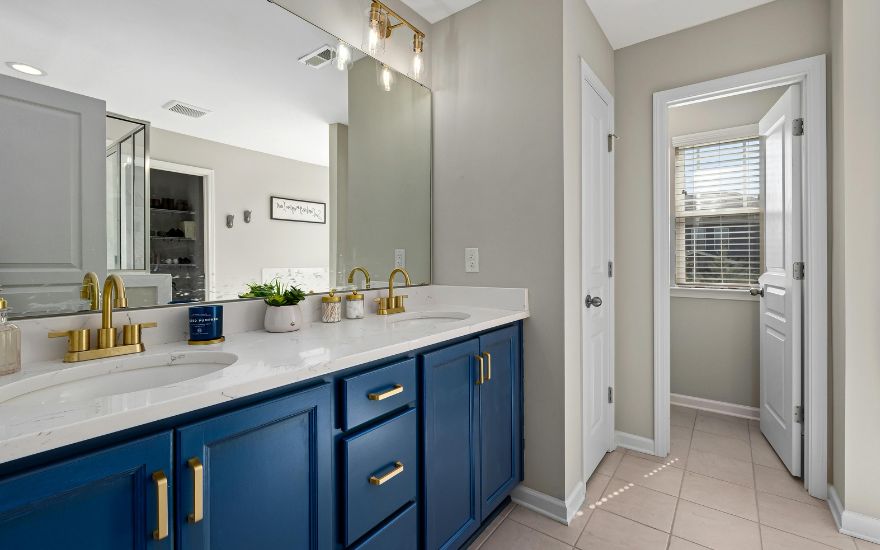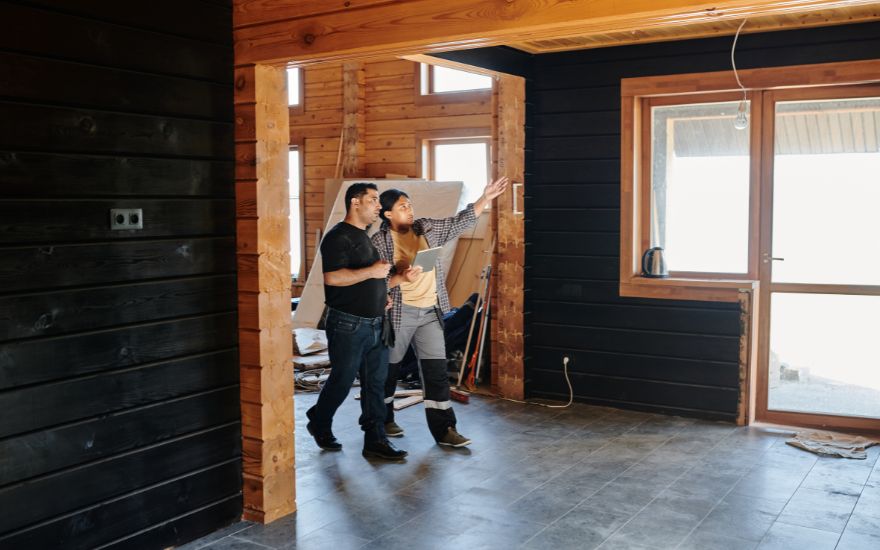When homeowners decide to renovate or upgrade their homes, one of the most important early steps is choosing the right professional for the job. Whether it’s a kitchen transformation, a basement overhaul, or a full-home remodel, you’ll likely come across two common terms: remodeling contractor and general contractor. At first glance, these titles may seem interchangeable—but in reality, they refer to distinct roles, each with their own area of expertise, responsibilities, and project scope.
Understanding the difference between a remodeling contractor and a general contractor can save you time, money, and frustration. It ensures that you hire the right professional with the right qualifications for your specific home improvement goals. At Cozy Casa, we’ve helped countless Ontario homeowners understand this distinction and choose the right path to achieve their vision effectively.
In this detailed guide, we’ll break down the differences between these two roles, explain when to hire one over the other, and help you make the most informed decision possible.
What Is a General Contractor?
A general contractor (GC) is a licensed professional or company responsible for overseeing the entire construction or renovation process. Their job is to manage the big picture, including coordinating subcontractors, ensuring materials are on-site, managing permits, maintaining timelines, and communicating with the client.
General contractors are typically hired for large-scale projects that involve multiple stages of construction and various trades. This can include:
- Building a new home from the ground up
- Adding a second storey to your house
- Major structural changes
- Full-home gut renovations
- Commercial construction projects
General contractors may perform some work themselves, but they usually subcontract most tasks—such as electrical, plumbing, drywall, and roofing—to specialists. Their primary focus is to ensure the project runs smoothly, complies with regulations, and stays on budget.
What Is a Remodeling Contractor?
A remodeling contractor, on the other hand, specializes in home renovations and remodeling projects. These professionals are experts in updating, reconfiguring, or modernizing existing residential structures.
Remodeling contractors are perfect for projects like:
- Kitchen remodels
- Bathroom renovations
- Basement finishing
- Living room redesigns
- Open-concept conversions
- Flooring, cabinetry, and window upgrades
Unlike a general contractor, a remodeling contractor may take a more hands-on approach, performing much of the work in-house or with a small team of trusted tradespeople. Their expertise is focused on working within an existing structure, optimizing layout, and improving aesthetics and functionality.
At Cozy Casa, we operate as specialized remodeling contractors—offering focused, professional, and fully-managed renovation services for homeowners across Ontario.
Key Differences Between Remodeling Contractors and General Contractors
To better understand how these roles differ, let’s compare them across several critical areas:
1. Scope of Work
- General Contractor: Manages large-scale or ground-up construction, including new builds, additions, and complex structural projects.
- Remodeling Contractor: Focuses on interior renovations, redesigns, and space optimization within existing homes.
2. Project Size
- General Contractor: Best suited for major projects requiring multiple permits, heavy structural changes, or new construction elements.
- Remodeling Contractor: Ideal for medium- to small-scale residential upgrades such as kitchen and bathroom renovations.
3. Team Structure
- General Contractor: Often hires and coordinates many subcontractors (plumbers, electricians, framers, etc.).
- Remodeling Contractor: Works with a smaller, dedicated team and may self-perform more tasks to ensure consistency and cost efficiency.
4. Experience Focus
- General Contractor: Broad experience with large developments and construction management.
- Remodeling Contractor: Deep expertise in design-forward renovations, working with clients to transform existing spaces.
5. Client Involvement
- General Contractor: The client may have limited interaction with subcontractors and focus mainly on high-level planning.
- Remodeling Contractor: Offers more personalized service with a focus on client input, materials selection, and design details.
When Should You Hire a Remodeling Contractor?
If your goal is to upgrade or personalize parts of your home, a remodeling contractor is almost always the right choice. These are some scenarios where hiring a remodeling contractor is ideal:
You’re Updating an Existing Space
Want to give your outdated kitchen a fresh, modern look? Remodeling contractors specialize in spatial design, fixture upgrades, and finishes that blend beauty with function.
You’re Staying Within the Original Floor Plan
If you’re not altering the home’s foundation or building new structures, remodeling contractors offer streamlined and cost-effective renovation solutions.
You Want Personalized Design Input
Remodeling professionals often work closely with interior designers, helping you select materials, finishes, and layouts that reflect your style.
You Value Transparent Pricing and Timelines
Remodeling contractors, especially those like Cozy Casa, operate with detailed quotes and schedules, helping you avoid the cost overruns common in larger, GC-led projects.
When Should You Hire a General Contractor?
While remodeling contractors excel at upgrades, there are situations where a general contractor is more appropriate:
You’re Building a New Home
If you’re constructing a house from scratch, a general contractor is responsible for managing every phase of the build, from excavation to final inspections.
You’re Adding Major Structures
Planning to build an additional wing or second floor? Structural expansions require large teams and significant permits, which fall under the general contractor’s domain.
You’re Taking on Multiple Large Projects Simultaneously
If your home renovation involves exterior changes, new rooms, extensive HVAC updates, and electrical re-routing all at once, a general contractor helps tie everything together at scale.
Remodeling Contractor or General Contractor: Which Is More Cost-Effective?
Many homeowners assume that general contractors are more expensive—and while that can be true due to the size of their projects, cost-effectiveness depends on the fit for the job.
Hiring a general contractor for a bathroom remodel, for example, could lead to unnecessary overhead. Conversely, hiring a remodeling contractor for a full addition may result in gaps in service coverage or permits.
At Cozy Casa, we focus on delivering high-quality renovations with a clear scope. Because we specialize in remodeling, we offer efficient timelines, competitive pricing, and hands-on service that you might not get from a large GC firm.
Cozy Casa: Your Remodeling Contractor in Ontario
As a specialized remodeling contractor serving Ontario homeowners, Cozy Casa offers a full-service, client-first approach to renovation. Here’s what makes us different:
Licensed & Insured
We comply with all provincial and municipal regulations, ensuring that your renovation is legal, safe, and inspected where required.
Design-to-Delivery Service
From floorplans to fixtures, we work with you from concept to completion—no handoffs, no confusion.
Transparent Pricing
Our estimates are detailed and honest. No hidden fees, no surprise invoices, and no vague line items.
Dedicated Project Managers
Every project is led by a professional who coordinates contractors, keeps you updated, and ensures the highest standards are maintained.
Superior Craftsmanship
Our skilled tradespeople take pride in every tile, cabinet, and finish. The result is a renovation that not only looks amazing but lasts.
Final Thoughts: Choose the Right Partner for Your Project
The difference between a remodeling contractor and a general contractor is all about project scope and specialization. If you’re making upgrades to your existing home, working within your current layout, or want design-focused renovations that reflect your taste, a remodeling contractor is your best bet.
And when you choose Cozy Casa, you’re not just hiring a contractor—you’re hiring a trusted partner who listens, delivers, and cares. From kitchens and bathrooms to basements and whole-home makeovers, we’re the team that transforms houses into dream homes—on time and on budget.
Ready to get started? Visit https://cozycasa.ca to schedule your free consultation today.
10 SEO-Friendly FAQs
- What’s the difference between a remodeling contractor and a general contractor?
A remodeling contractor focuses on renovations and updates to existing structures, while a general contractor manages full-scale construction and large, multi-phase projects. - Do I need a general contractor for kitchen renovations?
No. A remodeling contractor like Cozy Casa is ideal for kitchen renovations, offering design expertise and project management for interior upgrades. - Are remodeling contractors licensed in Ontario?
Yes, professional remodeling contractors like Cozy Casa are fully licensed and insured according to Ontario’s building and safety standards. - Which is more affordable: general contractor or remodeling contractor?
For renovation projects, remodeling contractors are typically more cost-effective because they specialize in the specific services needed without large overhead. - Can one company be both a general and remodeling contractor?
Yes, some companies operate in both capacities, but Cozy Casa focuses exclusively on remodeling for residential homes. - What type of renovations does a remodeling contractor handle?
Kitchen upgrades, bathroom remodels, basement finishing, flooring, cabinetry, and layout changes are common services. - Who handles permits in a remodeling project?
Remodeling contractors like Cozy Casa manage all necessary permits and inspections required for compliant renovations. - How long does a typical remodeling project take?
It varies based on scope. Bathrooms may take 3–4 weeks, kitchens 6–8 weeks, and full home remodels several months. - Do remodeling contractors offer design services?
Yes. Cozy Casa provides design assistance, material selection support, and layout planning as part of our service. - How do I hire the best remodeling contractor near me?
Look for licensed, insured, and reviewed professionals with a strong portfolio, clear pricing, and a collaborative approach—like Cozy Casa in Ontario.



